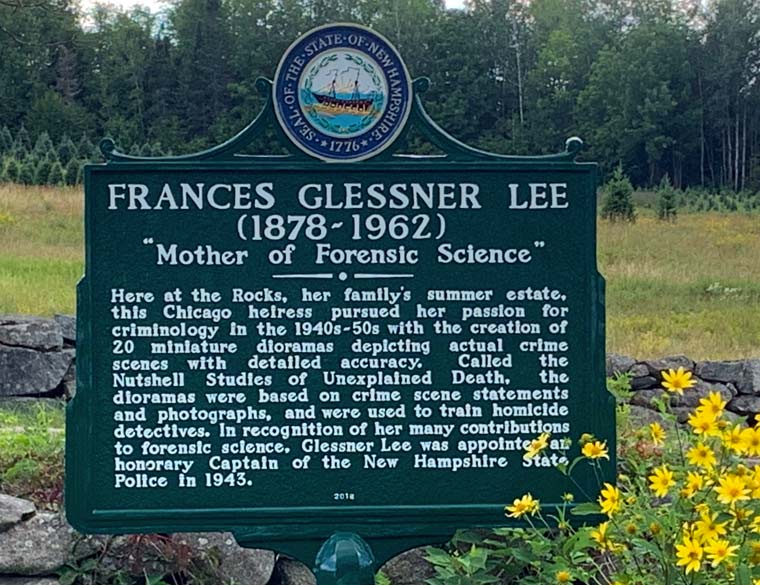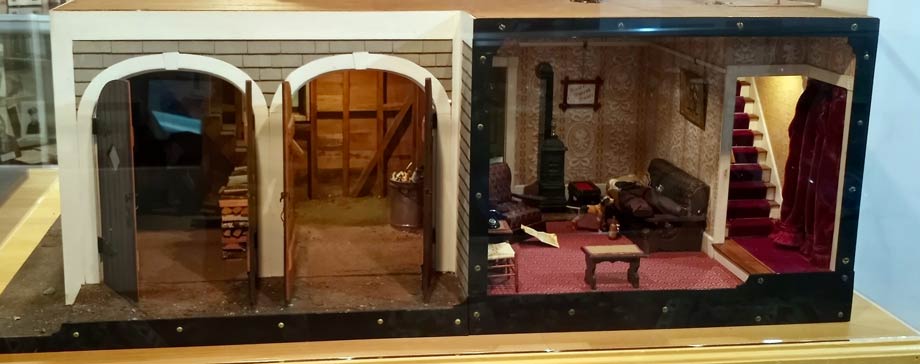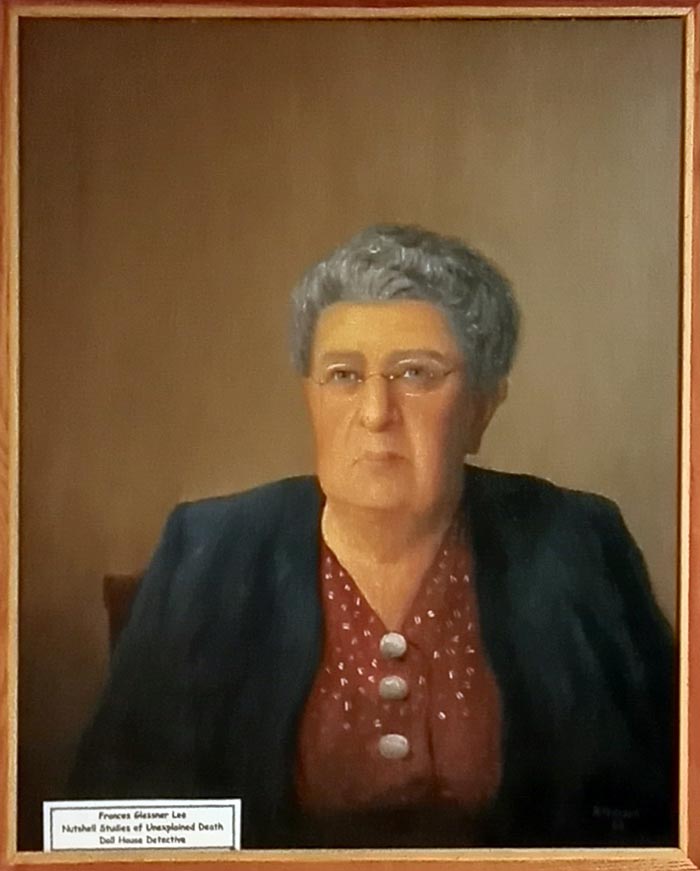The Mother of Forensic Medicine had Roots in Bethlehem

Until the 1940s, homicide detectives and medical examiners had little if any training in observing and collecting evidence at a crime scene, and often inadvertently destroyed or overlooked evidence by their clumsy and inconsistent approach to the scene of a murder, suicide or accidental death.
Frances Glessner Lee, a Chicago heiress born in 1878 whose family owned The Rocks Estate located across the street from Adair Inn, constructed meticulously detailed and scientifically accurate dioramas of crime scenes - dollhouse-like replicas that were exquisitely fashioned from actual cases that she had researched.

The "Sitting Room and Woodshed" Nutshell Study is on display at the Bethlehem Heritage Society, open during the warm weather months. Two additional rooms are to the rear of the diorama.
The Nutshell Studies of Unexplained Death, constructed by Frances during the 1940s and early 1950s, included the deceased and every aspect of the setting in which the body was found, including blood spatter, clothing and the knives, hammers, ropes and other lethal elements that may or may not have been involved in the person's death.

The portrait of Frances Glessner Lee, the Mother of Forensic Medicine, is displayed at the Bethlehem Heritage Society.
Furniture, wallpaper, curtains, lights, and door and window latches, along with the miscellaneous items in a room or outdoor setting, from rolling pins, cigarettes, and newspapers and magazines to kitchen and bathroom appliances, were rendered in miniature detail.
The dioramas transformed the emerging field of forensic medicine and were instrumental in training police how to methodically approach a crime scene, tasking them to examine each item at the site as well as what might be missing to help determine the cause of death.
Most of the victims in Frances' murder studies were poor or working class and might well be overlooked by the officers investigating their deaths. As training tools, the Nutshell Studies helped to dispel biases or prejudices that investigators might have by focusing on the evidence at the scene rather than the person's class in society.
Frances Glessner Lee's goal was to help investigators "Convict the guilty, clear the innocent, and find the truth in a nutshell."
It is believed that Frances built 20 Nutshell Studies. Nineteen remain in existence, 18 at the Office of the Chief Medical Examiner in Baltimore, MD, where they are still in use to train investigators in crime scene protocols, and one in Bethlehem. It can be seen at the Bethlehem Heritage Society where it is on loan from the Society for the Protection of New Hampshire Forests, the owners of The Rocks Estate; the 1,400-acre property was bequeathed to them by the Glessner family in 1978.
The object of using the Nutshell Studies is not to solve the mystery behind each diorama's murder, but to train the eyes of the police to observe and analyze each scene in a measured and methodical fashion by presenting all of the evidence present at an unexplained death in minute detail. The solutions to the deaths remain secret, but forensic trainees receive crime scene reports written by Frances to accompany their observations.
Frances Glessner Lee, whose interest in miniatures was a childhood fascination, was nationally respected for her pioneering work in forensic medicine and was made an honorary Captain in the New Hampshire State Police. She was the first woman in the United States to attain the rank of Captain.
Not only did Frances break barriers in the male-dominated police and medical fields, she combined her specialized forensic knowledge with the time-honored female art of domestic crafts by constructing almost all elements of the Nutshell dioramas herself, creating the dolls who were the crime scene victims, their clothing such as tiny socks knitted with straight pins, and most of the additional miniature objects.
Frances Glessner Lee died in 1962. She is remembered today by the generations of men and women her dioramas helped to train, in several books and films and in a New Hampshire Historical Marker on site at The Rocks in Bethlehem. A retrospective of her life and work was exhibited at the Renwick Gallery of the Smithsonian American Art Museum in Washington, D.C. in 2017.
